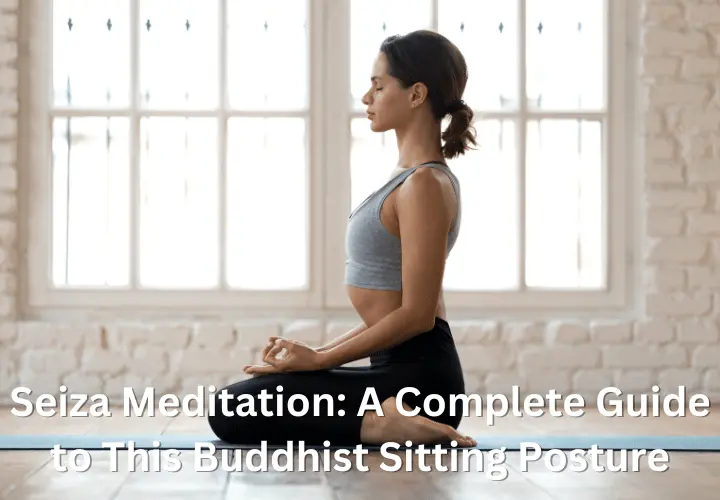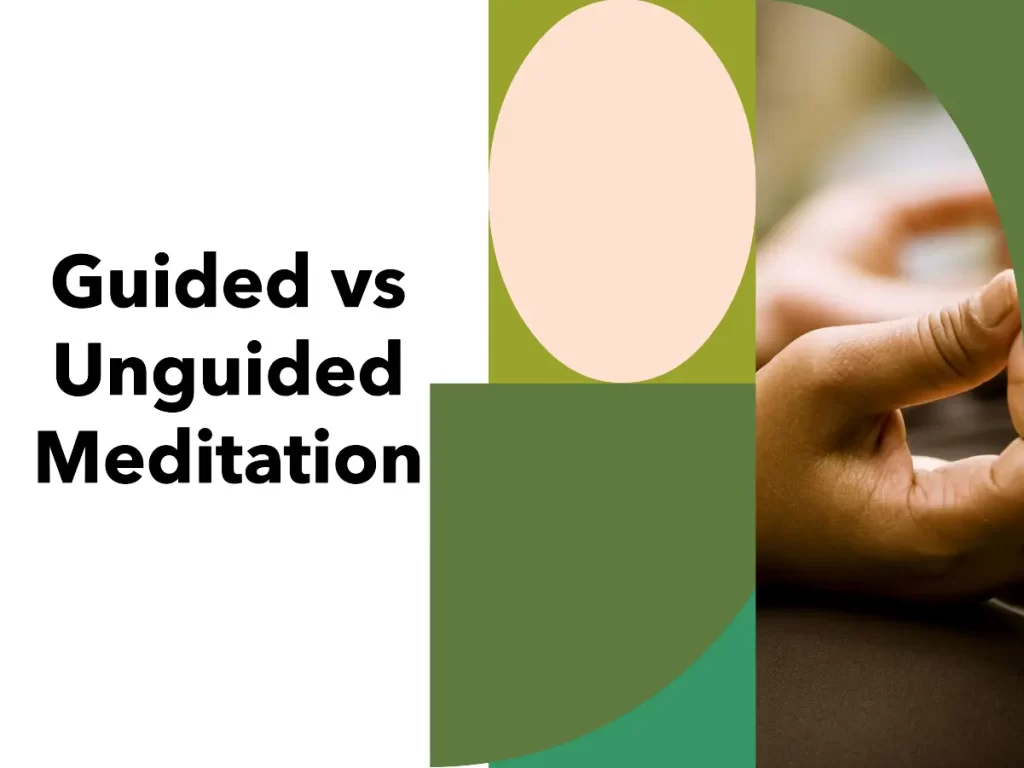The seiza meditation is a kneeling position that guides you towards a formal position of sitting and a meditative state in your wellness journey. Seiza is pronounced as Say-Zah in the Japanese language. It is as old as the oldest traditions of Buddhist monks in Japan, yet the Seiza meditation does not take years to develop. Even you can do it after a few tries and ensure that you sit with good posture and can reach a meditative stage to ensure well-being.
In this article, we intend to take you along to understand the Japanese art of sitting, such that you can achieve good posture and conduct routine activities with a higher level of grace. Mundane and negligible are words you often hear when describing daily activities, but with the help of Seiza, you can make even such activities into works of art. So, read through the article and learn the origins, uses, alignment, and proper techniques of the Seiza position.
What Is Seiza? The Traditional Japanese Meditation Position
The Japanese are known for their grace, from hand movement to posture when sitting in a cross-legged position, the Japanese are full of grace. However, such good posture is not inherently ingrained in their genetics, instead it comes from the oldest traditions of ceremonial and normal interaction manuals. Japanese tradition tells the way to sit, and one of them is Seiza.
Definition and Origin of Seiza Sitting Position
The Oxford Dictionary defines Seiza meditation to be a ‘kneeling position used in traditional Japanese meditations’. It is a sitting method that requires kneeling in a way that is supported by a cushion or bench and a straightened posture using support from a straight spine. Whether touching the floor or sitting on a bench, the seiza method of meditation is a formal way of sitting for extended periods.
Re;ated: The Complete Guide to Seiza Chairs for Seiza Meditation
However, to understand the exact meaning, its origins must be traced back. The Japanese tradition goes back thousands of years, but Seizah was developed in the Edo Period of the Samurai Era. The samurai era lasted from 1185 to the 19th century, but the Edo period was much shorter i.e. from the 17th century to 1867. This means that somewhere between the 150 years gap, the Seizah method was developed.
Originally, it is a method of training samurais for military purists, but seiza may be used by locals as well, especially during formal ceremonies. The Japanese word for Seiza also can be translated to mean ‘SEI’ meaning correct and ‘ZA” meaning to sit. So, to correctly sit is seiza
Brief History of Use in Meditation and Tea Ceremonies
Seiza was developed by the samurai to prepare themselves for battle at any time. When one is slouched or comfortably sitting Burmese or full lotus, then getting up takes some time. However, samurai developed a way of sitting that prepares them to get up and fight in seconds, hence the seiza.
However, the Japanese culture acquired this style not only for battle but also in routine life. The grace and elegance of the Seiza style, soon made it popular among high-ranking families. So, it continued to be used in tea ceremonies and other formal occasions. From there, it also took root as a meditative position.
The Proper Alignment for Seiza Posture
Ditch the stool and to get correct seiza position, here are the steps to follow:
- Place your legs together and lower yourself onto your knees flat on the floor
- Touch both feet and calves must be parallel
- Find your balance
- Spine straight, shoulders relaxed, hands are folded and in the lap
- Knees and ankles bearing body weight
Alternative Sitting Positions for Meditation
The Japanese culture is too rich for just one sitting position, so over the thousand years of history, several other methods were developed as well. A few of these are:
- Burmese
Legs are crossed and flat on the floor, along the knees. Tilt your body a little forward and keep your back straight
- Full Lotus Position
A highly stable sitting alternative. Each foot is placed on the other leg’s thigh and the back is straight
- Chair & Stool Options
You can use a chair or a folding stool for resting the buttocks but keeping the back straight. All chair and stool options ensure blood flow into the legs with good posture if you have issues with sitting on the floor
- Pros And Cons Of Each Compared To Seiza
The pros of sitting on the floor in a meditative position, whether it is the Burmese, full lotus, vajrasan or Seiza is that you can attain great posture. However, the cons remain knee pain and ankle pains, if you are not careful
With chair or stool sitting options, you don’t experience pain, but your legs and feet can get numb if you sit for too long in informal settings.
The Benefits of Seiza for Meditation
The purpose of meditative techniques, as per the Japanese culture is to get in-tuned with your real self. Deep breathing and sitting positions that even shoguns had to follow were not because of some strict social rules, but instead were supported by the benefits of Seiza as a form of meditation.
Improved Spine Alignment and Grounded Posture
When sitting in a seiza position for extended periods, you ensure that your back is aligned straight, and the spine remains straight and grounded with the floor. This inadvertently gives you an amazing posture, even you are not in a seiza posture. This position requires a straightened back and legs flat on the floor, so when you get up, you naturally keep your spine straight as you get used to it.
Increased Stability and Ability to Concentrate
In the Japanese methodology, the position of the Buddha is one of concentration and calmness. Seiza is a way of reaching that level of calm and concentration. When you are placed on the floor, seizures cannot be attained without relaxing the body muscles and grounding your energies with the floor. Therefore, this position, inadvertently makes the person or practitioner much calmer in their energies and focused on the tasks at hand.
Physical Benefits of Seiza
A highly beneficial aspect of the Seiza that can also be supported by medical science is that it allows your core muscles to stretch. As you keep practicing seiza posture and become accustomed to sitting, your muscles are trained out properly by being stretched for elongated periods.
Table Comparing Knee and Ankle Strain in Various Positions
| Position | Knee Strain | Ankle Strain |
| Full lotus | No | Yes |
| Burmese | Yes | No |
| Yokozuwari | Yes | Yes |
| Seiza | Yes | No |
Statistics on Reduced Back Pain among Seiza Meditators
Although, Seiza may cause knee pain on long exposure, but it has benefits in alleviating back pain. Almost all seiza meditators, with a 100% success rate have claimed that their back pain was gone after using this technique in routine. You may prefer to sit in another position because of your ankle and knee pains, but if you only have back pain, then Seiza is for you.
Mental & Emotional Benefits
80% of seiza meditators report feeling calmer and less stressed, thereby indicating that sitting cross-legged on the floor or following a sitting position of the Seiza can have more benefits for you. The benefits of seiza on mental health are therefore reported to be being calm, focused, and concentrated. You can sit on a zabuton or on the floor, but your mind will be in tune with your body and you will achieve a calmer state during meditation.
How to Sit In Seiza Comfortably
Eating at a low table in a casual restaurant can be either stressful or completely comfortable. It is not the seiza that is inherently uncomfortable, but rather the way you do it that it becomes comfortable. So, follow these steps:
Tips for Those Lacking Flexibility in Hips and Ankles
If you lack flexibility, then Japanese sitting techniques are followed by either stretching or walking before you sit down. Whether the sitting position is agora or warez, you can avoid numbness in the lower legs when bent by previously stretching muscles or walking.
Use a Meditation Bench to Enable Proper Posture
To sit up straight, the floor is not necessary, you can also keep sitting in a chair. Correct sitting technique with proper posture, feet on the ground and keep your back straight. Voila! You are sitting seiza on a chair
Setting Up Your Meditation Space for Seiza
To be comfortable, the surrounding environment can also make or break your efforts, so here are a few recommendations:
- Clear the Floor and Add Cushions/Blankets As Needed, you can also use a Zafu
- Optionally Use a Short Stool to Elevate Knees
- Balance being upright
- Tops of the feet must not have any weight on them
Stretches and Exercises to Improve Seiza Flexibility
Traditional Japanese sitting techniques for posture may be challenging, but they are not impossible. To train yourself with techniques that involve sitting in seiza, follow these methods:
Top 5 Recommended Stretches With Photos
- Quad stretch, standing or sitting
- Child’s pose
- Tricep stretch
- Hamstring stretch
- Spinal twist
Beginner Routine to Loosen Hips, Knees, and Ankles
For beginners, we would recommend just walking. Begin with slower-paced walking and build up to something like a jog to prepare yourself and your muscles for seiza meditation.
Step-By-Step Guide to Seiza Meditation
Whether aikido or seiza, you have to build the posture step-by-step. Here are the steps for seiza:
Instructions on Assuming the Posture and Getting Grounded
Being by sitting on the ground. If you want a cushion then sit on it or just the ground is also fine. You can also use a straw tatami. Posture may be difficult, but ground yourself, take deep breaths and focus
What to Do With Your Hands, Arms, Shoulders, and Gaze
Your feet must be upside down, flatly against the ground. Knees straight and also touching the ground.as your back is straightened, put your hands above the right thigh and the right hand accordingly. Arms and shoulders must be relaxed and to increase focus, keep your at a spot
Troubleshooting Pain and Discomfort in Seiza
If you feel any discomfort, then adjust your muscles to be adjusted more naturally. Before sitting, you will likely find solutions by stretching your muscles.
Keep in mind, that the first few times will be painful, but certain situations can become used to when you do it continuously
- Strategies for Reducing Pain in Knees, Ankles, Hips
Stretch, stretch, and stretch. However, if the pain does not go away, even when practicing seiza in informal situations then avoid doing it if the pain increases.
- When to Come Out Of the Posture and Rest
It is generally considered that 30 minutes must be the maximum time for seizures. Whether you are petite or have big toes that can help you manage the position for longer, the traditional Japanese technique allows it for half an hour only.
Advanced Seiza Techniques
If you acquire the seiza position and keep your body relaxed, then the next step is to improve on other positions as well. You can try to do these two sitting positions:
- Moving From Half Lotus to Full Lotus in Seiza
- Seiza Walking/Standing Meditation
Alternatives Sitting Positions to Seiza
The alternatives to seiza that can be used as meditative positions are:
- Seiza Chair Sitting: With a straight back and feet flat on the ground.
- Modified Kneeling: Place buttocks on a cushion and place knees on the ground with the back straight
- Bolster Aid: Place rectangular bolster behind the head and extend the back with knees folded
How Do You Practice Seiza Position?
To practice seiza, consistency is key. Keep practicing sitting cross-legged or in seiza style on the floor or using a cushion or stool. Your blood circulation must not be disturbed and your back must remain straight. Repeat this 3 times a week and in no time you will be able to master the art of seiza meditation. For seiza, keep these things in mind:
- The back must be erect
- You can tilt your upper body a little forward for comfort
- Your neck must not be strained
- You can use a cushion or stool, only if sitting on the ground is too uncomfortable
Frequently Asked Questions about Seiza Meditation
“Is Seiza Appropriate For Beginners?”
Yes, seiza is not a complicated technique to follow. However, unless you have chronic ankle and knee pain problems, then it is not recommended, irrespective if you are a beginner or master seiza
“Can I Meditate In Seiza With Back/Knee Injuries?”
Avoid seiza if you have any skeletal-related injuries because it will put increased strain on yourself. Instead, you can rest and recover, and then do the seiza technique
“Do I Need Special Equipment For Seiza?”
All you need for basic seiza is a ground to sit on and that is it. Although, people use cushions, straw cushions or stools to support their seiza style, but at the basic level seiza is all about elegance, grace and minimalism
What Is The Healthiest Way To Sit?
The healthiest way to sit is with a good posture. You back must be straight, your shoulders relaxed and feet firmly on the ground. This can be achieved by numerous techniques, one of which is the seiza meditation
What Is The Japanese Way Of Sitting Meditation?
The Japanese conduct sitting meditation in a handful of different styles. A few of them are:
- Seiza meditation
- Full lotus meditation
- Half lotus meditation
What Are The Rules For Seiza?
- The back must be straight
- Knees must be on the ground
- Your weight must be on your calves
With this long and detailed article, we hope that you knowledge of seiza has improved. With this new information on seiza meditation, you can practice being mindful and focused by a seiza sitting position, while at the same time calming yourself to attain the best meditative focus.
The key point to remember is that persistence in practicing will take you to mastering the art of seiza. Although, in the beginning, you may find it hard, but consistency will make you better with time. Although, if you feel knee or ankle pains stubbornly and they do not go away, then perhaps seiza is not for you.



